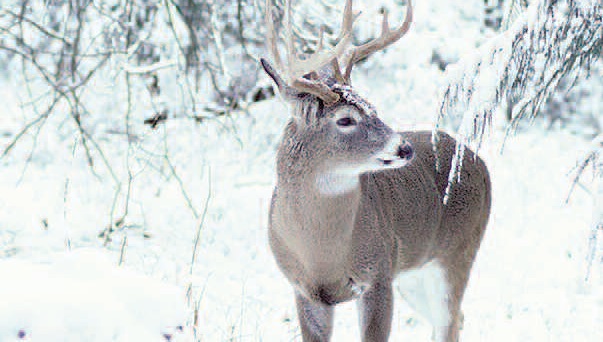SCORES & OUTDOORS: Surviving the rigors of Maine’s winters
 SCORES & OUTDOORS
SCORES & OUTDOORS
by Roland D. Hallee
During the blizzard that swept through our area last week, I was standing at my kitchen window, watching the bird feeders. To my surprise, even during the height of the storm, with heavy snowfall and howling winds, the birds kept coming to the feeding stations.
“Tough little buggers,” I thought while watching.
That got me to thinking. How do these animals and birds survive these harsh winters?
So, I decided to do some research on the white-tailed deer. I had recently read an article that said the “mild” winter so far made it easier for the deer to move in search of food. That all changed last Sunday and Monday. Now that there is in the vicinity of an additional three feet of snow on the ground, how will they survive the remainder of this season?
White-tailed deer have developed a set of adaptations that enable them to survive the deep snow and cold temperatures that occur in Maine. Maine is the northern-most point of their range and there are very few of them north of the St. Lawrence River. Also, the further north you go in their range, the larger the body size, as compared to their counterparts in the south.
According to Maine Department of Inland Fisheries and Wildlife biologists Joe Wiley and Chuck Hulsey, deer shed their hair in the spring and fall. The summer hair has solid shafts and lacks the undercoat, but the winter hair has hollow hair shafts, and dense, wool-like under fur, providing effective insulation.
Also, deer will alter their diet to accumulate and retain more fat under their skin and around organs, providing them with insulation and energy reserves for the months that lie ahead. The winter diet is lower in protein and less digestible than the summer diet, requiring more energy to digest and resulting in fewer calories. The stored fat is burned during winter to partially compensate for the lack of energy in the winter diet. Deer will lose weight during the winter. If winters become too long (early start and late finish) deer could run out of stored energy and die.
 Fat reserves in adult does can account for up to 30 percent of their body mass in the fall.
Fat reserves in adult does can account for up to 30 percent of their body mass in the fall.
Their winter habitat is also important. Dense softwood canopies intercept more snow, resulting in reduced snow depths. Gathering in these areas also allow many deer to share the energy cost of maintaining a trail network to access food and to escape predators.
As you would suspect, the greatest mortality in the winter is found among fawns, followed by adult bucks and then does. Severe winters can drastically deplete the fawn population, resulting in fewer young to mature into adulthood. Consecutive severe winters can have a devastating effect, by as much as 90 percent, of young maturing, depleting the adult herd.
So, should you try to help out these critters?
Although supplemental feeding of deer is usually well-intentioned, it could have some severe adverse effects. Just to touch on a few of the reasons to leave the deer to Mother Nature’s natural course:
- Supplemental feeding may actually increase predation. Providing supplemental food sources crowds deer into a smaller area than their usual range, making it easier for coyotes and bobcats to hunt down the deer, by limiting their escape routes;
- Feeding sites near homes may place deer in danger of free-roaming dogs;
- Deer feeding stations may increase deer/vehicle collisions. Feeding stations near homes also place the deer in close proximity to well-traveled highways;
- Deer could actually starve when fed supplemental foods during winter. It takes deer two weeks to adjust to new foods, and could starve in that time period;
- Deer compete aggressively for scarce, high-quality feeds;
- They could die from eating too much at one time;
- Deer concentrations at feeding sites may increase the vulnerability of deer to disease. MDIFW has documented deer concentrations equal to 350 deer per square mile at some feeding sites can cause an outbreak of infectious diseases, such as the bovine tuberculosis in 1994, and more recently, the fear of introduction of Chronic Wasting Disease, which, by 2016, had only been found in deer and moose. Although CWD, a disease that causes weight loss leading to death, has not been detected in Maine, the disease, which originated in the midwest, seems to be making its way east. It is now found in 23 U.S. states and two Canadian provinces.
Finally, predation and vehicle collisions claim more deer during the winter than starvation. Mother Nature has provided well for her creatures, so just sit back and watch them go about their daily routine.
Responsible journalism is hard work!
It is also expensive!
If you enjoy reading The Town Line and the good news we bring you each week, would you consider a donation to help us continue the work we’re doing?
The Town Line is a 501(c)(3) nonprofit private foundation, and all donations are tax deductible under the Internal Revenue Service code.
To help, please visit our online donation page or mail a check payable to The Town Line, PO Box 89, South China, ME 04358. Your contribution is appreciated!


Leave a Reply
Want to join the discussion?Feel free to contribute!